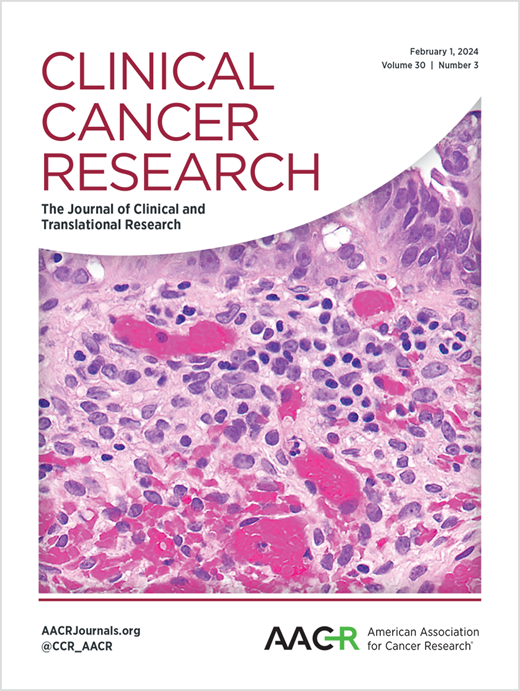The novel immunocompetent Eµ-SOX11CCND1 mouse model phenotypically and molecularly resembles human mantle cell lymphoma
IF 10.2
1区 医学
Q1 ONCOLOGY
引用次数: 0
Abstract
Purpose: Mantle cell lymphoma (MCL) remains incurable despite therapeutic advances, highlighting the need for improved preclinical models. Existing transgenic MCL mouse models have significant limitations, restricting their translational value. Experimental Design: We generated an immunocompetent MCL model by overexpressing the key oncogenic drivers SOX11 and CCND1 under the Eµ enhancer in C57BL/6 mice, aiming to replicate human MCL’s biological and pathological features. Results: Eµ-SOX11CCND1 mice developed lymphoma marked by clonal B1a cell expansion in lymphatic and extranodal tissues. Morphologic, immunophenotypic, and transcriptional profiling revealed strong similarity to human MCL, with pathway analysis confirming significant molecular overlap. Importantly, lymphoma cells could be adoptively transferred into wild-type recipients, enabling therapeutic testing within an intact immune system. Conclusions: The Eµ-SOX11CCND1 mouse represents a robust and biologically relevant model that faithfully recapitulates human MCL. Its immunocompetent nature and adoptive transfer capability make it a valuable model for studying disease mechanisms and evaluating novel therapeutic approaches for MCL patients.新型免疫活性Eµ-SOX11CCND1小鼠模型在表型和分子上类似于人套细胞淋巴瘤
目的:尽管治疗进展,套细胞淋巴瘤(MCL)仍然无法治愈,这突出了改进临床前模型的必要性。现有转基因MCL小鼠模型存在明显的局限性,限制了其翻译价值。实验设计:我们在C57BL/6小鼠中,通过Eµ增强子下过表达关键的致癌驱动因子SOX11和CCND1,建立了具有免疫能力的MCL模型,旨在复制人MCL的生物学和病理特征。结果:Eµ-SOX11CCND1小鼠发生淋巴瘤,淋巴和结外组织中克隆性B1a细胞扩增。形态学、免疫表型和转录谱显示与人类MCL有很强的相似性,途径分析证实了显著的分子重叠。重要的是,淋巴瘤细胞可以过继性地转移到野生型受体中,从而在完整的免疫系统中进行治疗试验。结论:Eµ-SOX11CCND1小鼠代表了一个可靠的、与生物学相关的模型,忠实地再现了人类MCL。它的免疫特性和过继转移能力使其成为研究疾病机制和评估MCL患者新治疗方法的有价值的模型。
本文章由计算机程序翻译,如有差异,请以英文原文为准。
求助全文
约1分钟内获得全文
求助全文
来源期刊

Clinical Cancer Research
医学-肿瘤学
CiteScore
20.10
自引率
1.70%
发文量
1207
审稿时长
2.1 months
期刊介绍:
Clinical Cancer Research is a journal focusing on groundbreaking research in cancer, specifically in the areas where the laboratory and the clinic intersect. Our primary interest lies in clinical trials that investigate novel treatments, accompanied by research on pharmacology, molecular alterations, and biomarkers that can predict response or resistance to these treatments. Furthermore, we prioritize laboratory and animal studies that explore new drugs and targeted agents with the potential to advance to clinical trials. We also encourage research on targetable mechanisms of cancer development, progression, and metastasis.
 求助内容:
求助内容: 应助结果提醒方式:
应助结果提醒方式:


